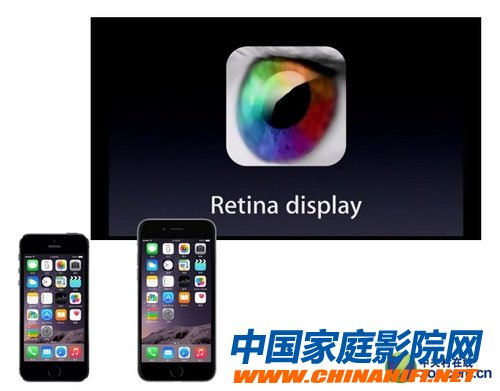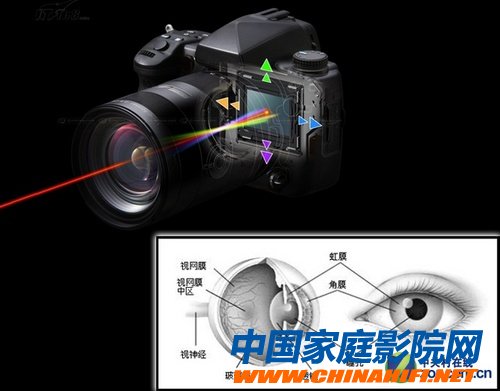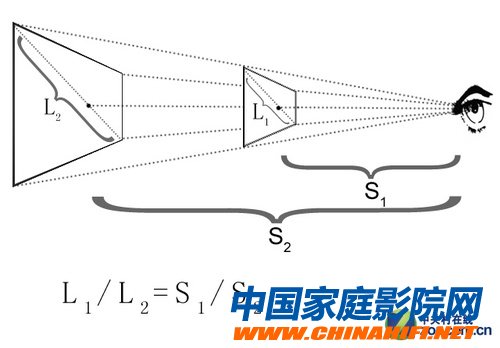Is ppi enough to see the screen resolution? Since the launch of Apple's 326ppi (326 pixels per inch) iPhone 4 in 2010, the retina screen has become synonymous with clear screens in people's minds. Major manufacturers are scrambling to launch high-ppi smartphones, and the recently released iPhone6 ​​plus also ranks 1920*1080 pixels on a 5.5-inch screen. In contrast, TV screens are dozens of times or even hundreds of times larger than mobile phones, and the resolution is only four times that of 4K of 1080P. So many people will think that the screen of the TV is not comparable to the screen of the mobile phone. But in fact, the retina screen of the mobile phone is not worth mentioning compared with the TV.

Mobile phones are the most important consumer electronic devices in the world, and mobile phone users in China are close to 1.3 billion. It is precisely because of the popularity of the hand, the technology and function of the mobile phone deeply affect people's understanding. Many people are exposed to the concepts of "retina screen" and "ppi", all starting from mobile phones. Under the propaganda of the merchants, people subconsciously believe that the retina screen and high ppi are synonymous with clear screens, and bring this conclusion to the display, television, projection and other industries. But in fact, there are many factors that affect people's viewing clarity, especially between products in different industries.

Apple's Retina Screen The retina screen we mentioned was first introduced by Apple at the iPhone 4 conference in 2010, representing a high-resolution screen with resolutions that exceed the limits of human eye recognition. Jobs originally defined it as: "When you take something 10-12 inches (about 25-30 cm) away from you, its resolution is as high as 300 ppi (300 pixels per inch). Your retina can't tell the pixel."

Viewing distance is also very important. We can see two key data from Apple's definition of retina screen: one is "10-12 inches (about 25-30 cm)" and "300ppi (300 pixels per inch)" . The clarity of the screen we see is determined by the fact that the two data are common. However, people tend to ignore the influence of distance on viewing, and only judge the delicateness of the screen by ppi, which is the density of pixels. If in the mobile phone industry, because the distance to watch the screen is similar, it is still possible to rely on ppi to judge the clarity of the screen. But for TV screens that are more than 2 meters away, the concept of 300ppi is completely meaningless. The author will give you a detailed analysis through calculation. The viewing distance is proportional to the number of screen sizes. If you want to accurately calculate the ppi value that the human eye can recognize at different distances, you need to do detailed scientific research and complex data calculations. The cost and time cost are huge. So now we are only making a rough calculation from the existing data and some optical knowledge. Therefore, it is easy and convenient to draw the connection between several data, which is convenient for us to understand, and can also draw the required conclusions.

The structure of the human eye is similar to the camera. Let us briefly talk about the structure of the human eye. The human eye is like a camera. The structure of the cornea and lens in the front is like the lens of the camera. The retina responsible for imaging is equivalent to the negative of the camera. Or a photosensitive element. The resolution of the retina of the human eye is constant, and the resolution within a certain range of viewing angle is also constant. That is to say, no matter whether the thing is near or far, whether it is big or small, as long as he occupies the same size of the human eye, the resolution of the human eye to view the object is certain. When the resolution is fixed, the larger the object is, the larger the size of each pixel is. The closer the object is, the smaller the size of each pixel is.

The resolution of the human eye is fixed in a fixed angle of view. Now we can conclude that as long as the screen occupies the same perspective of the human eye and has the same resolution, whether it is large or small, it is far and near, and the final viewing effect it's the same. Now the screen aspect ratio of smartphones is 16:9, which is the same as TV. According to the perspective principle, we can establish the data relationship between mobile phones and TVs with the same perspective (as shown in the figure). It can be concluded that the size of the screen and the viewing distance are directly proportional.

The viewing distance is proportional to the screen size. For the convenience of calculation, we select the iphone6 ​​plus mobile phone (screen size: 5.5 inches, resolution: 1920*1080) and the 55-inch resolution 1920*1080 TV. It is known that iphones have a viewing distance of 10-12 inches (about 25-30 cm) and allow them to occupy the same viewing angle. It can be concluded that a 55-inch 1080P TV requires only 2.5-3 meters of viewing distance, and can achieve the same clarity as the iphone6 ​​plus. In fact, the viewing distance of a 55-inch TV is often farther than 3 meters. The increased viewing distance causes the image of the TV to be projected onto the human eye to be higher, that is, the 55-inch 1080P TV can completely blast the iphone6 ​​plus mobile phone. Retina screen. And now the TV resolution has entered the era of 4K, which can provide four times the resolution of 1080P. It can be said that in the face of the mainstream 4K TV, the top retina screen phone is not worth mentioning.
Lighting is very important. It keeps you productive during the day and night. Glass chandeliers` effect is particularly striking. During the day, its delicate appearance is eye-catching, and at night, the light shines through the glass texture, bringing a unique visual enjoyment. Glass chandeliers create an elaborately designed space with modern glass that has a decorative and elegant appeal that beautifies any scene. Glass chandeliers are available in a variety of styles to meet the needs of a variety of scenarios.
Stained Glass Chandelier,Wine Glass Chandelier,Sea Glass Chandelier,Glass Globe Chandelier
JIANGMEN LEDERLIGHT LIGHTING Co.,LTD , https://www.lederlightcn.com